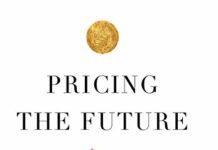
Ebook Info
- Published: 2006
- Number of pages: 224 pages
- Format: PDF
- File Size: 6.57 MB
- Authors: George G. Szpiro
Description
Most of us picture mathematicians laboring before a chalkboard, scribbling numbers and obscure symbols as they mutter unintelligibly. This lighthearted (but realistic) sneak-peak into the everyday world of mathematicians turns that stereotype on its head.Most people have little idea what mathematicians do or how they think. It’s often difficult to see how their seemingly arcane and esoteric work applies to our own everyday lives. But mathematics also holds a special allure for many people. We are drawn to its inherent beauty and fascinated by its complexity?but often intimidated by its presumed difficulty. The Secret Life of Numbers opens our eyes to the joys of mathematics, introducing us to the charming, often whimsical side, of the discipline. Divided into several parts, the book looks at interesting and largely unknown historical tidbits, introduces the largerthan- life practitioners of mathematics through the ages, profiles some of the most significant unsolved conjectures, and describes problems and puzzles that have already been solved. Rounding out the table of contents is a host of mathematical miscellany?all of which add up to 50 fun, sometimes cheeky, shorttakes on the field. Chock full of stories, anecdotes, and entertaining vignettes, The Secret Life of Numbers shows us how mathematics really does affect almost every aspect of life?from the law to geography, elections to botany?and we come to appreciate the delight and gratification that mathematics holds for all of us.
User’s Reviews
Editorial Reviews: From Publishers Weekly The 50 chapters in this light, occasionally amusing book by Swiss science journalist Szpiro (Kepler’s Conjecture) range from two to six pages and include very little mathematics. They cover a wide range of topics, from profiles of famous mathematicians—Daniel Bernoulli, John von Neumann and Niels Henrik Abel, for example—to a superficial discussion of some unproven mathematical conjectures. Szpiro also touches on game theory, Bible codes, the game of Tetris, Isaac Newton’s prediction of the end of the world, and the need for insurance. Although mathematics, at some level, is associated with each topic, rarely is it made central, so little holds the book together. Nonetheless, individual chapters are engaging. One on proportional representation (in Congress, for example) documents the surprising fact that a state’s representation might increase as its percentage of the total population decreases. Another explains the ways our calendars have been adjusted to compensate for the fact that “the time between two spring equinoxes is… 365.242199 days, which in turn equals nearly, but not exactly, 365.25 days.” The discrepancy causes a host of temporal problems. Many of the chapters have appeared previously in the Swiss newspaper Neue Zurcher Zeitung, which accounts for their abbreviated style and, perhaps, their repetitiveness. (Mar.) Copyright © Reed Business Information, a division of Reed Elsevier Inc. All rights reserved. About the Author George G. Szpiro is a mathematician turned journalist. He earned an M.A. at the Swiss Federal Institute of Technology, an MBA, from Stanford, and a Ph.D. in mathematical economics from Hebrew University. He taught at the Wharton School, Hebrew University, and the University of Zürich; for the past 20 years, he has been the Israel correspondent for Neue Zürcher Zeitung. His first book, Keplers Conjecture, was widely praised.
Reviews from Amazon users which were colected at the time this book was published on the website:
⭐The Secret Life of Numbers: 50 Easy pieces on how Mathematicians Work and Think by George G. Szpiro is a collection of articles focused on the history and evolution of mathematics and mathematicians. Mathematician George Szpiro is now a journalist aspiring to spread the wonders and significance of mathematics commonly misunderstood by the masses. The Secret Life of Numbers is a collection of 50 articles divided into six parts. The articles focus on mathematicians, conjectures, proofs, interesting facts, and connecting mathematics to other disciplines. I read this book as an educator looking to implement it into the curriculum to enhance the students’ educational experience and to optimize their understanding of mathematics. Szpiro presents insightful stories about mathematics, but for my purpose of teaching and engaging high school students, The Secret Life of Numbers falls short.This book addresses many interesting topics that I found engaging, but there were also topics that did not hold my interest. The chapters “Looping Leap Years”, “The Tile Layer’s Efficiency Problem”, “Small Mistakes May Have Large Consequences”, and “Ignorant Gamblers” are my favorite. These chapters portray appealing mathematical concepts that can be built into a lesson plan for a high school classroom. The chapters listed focus on concepts applicable to daily living, and therefore are relevant for everyone, not just mathematicians. Many of the other articles incorporate the history of mathematics which can be fascinating, but at times I found myself loosing focus. For anyone that is inherently intrigued in the background of mathematics/mathematicians those same articles would be appealing. However, for the general population, the interest would be very low, and students would not see the importance in minute details of a person’s life or events.Part VI of The Secret Life of Numbers addresses the use of mathematics in other fields of study. This section could be helpful in broadening students understanding of the usefulness of mathematics, but it is not presented until the end. By this point in the reading, students would have drudged through the historical facts and become uninterested in the reading. Szpiro’s choice of formatting is detrimental to his overall goal “to give readers an understanding…of the importance…[of mathematics]” (p. xi). Many readers will lose focus before they even touch part VI; which in my opinion would be more relevant to them than the previous articles. Part VI does not present much usefulness in teaching particular mathematical topics, but it does give readers a greater understanding for the wide-ranging field of mathematics. Therefore, I would encourage reading part VI and having students read it to expand their knowledge about mathematics in the world.The Secret Life of Numbers is not the right book for engaging high school students in mathematics. Szpiro aspires to engage all people in the importance and beauty of mathematics, but without preconceived interest some articles are dull. Otherwise, Szpiro presents meaningful articles about mathematics. The Secret Life of Numbers is well suited for aspiring mathematicians in college, but not for my purposes of teaching and engaging high school students. I would utilize the articles from part VI and the ones listed above, but not the entire collection.
⭐When the word “math” gets brought up, most people typically groan at the thought of it. The Secret Life of Numbers:50 Easy Pieces on How Mathematicians Work and Think by George G Szpiro works towards changing those attitudes. This book is compiled of 50 distinct relatable stories of mathematicians and what they do and how their work is relatable to the world today.The first part of this novel is a discussion on history of mathematics. Discussing things such as leap years and the world coming to an end, the book gets off to a great start on relating to any person, no matter what their background.The second part leads into unsolved conjectures. Unsolved problems were very much so discussed on how these conjectures are needed to be solved by people from all over the world. In mathematics, not one person is able to work towards finding a solution. Mathematics takes a team and that is something that is relatable to all students as future educators. The third part of the book is a discussion on solved solution. The teamwork comes together by showing the a problem is not necessarily solved just by one person and solutions are found by teams of people.The fourth part of the book is a discussion on personalities. Relating back to mathematics, this part of the book discusses how teamwork and mathematics come together to form a team within given professions.Moving forward, mathematics can be used in not so typical mathematical matters. Math is being used to explain non mathematical concepts/abstract matters such as gambling and tetris. This may be very beneficial in an educational setting in order to show how everything has to do with mathematics, whether or not it may seem that way to the naked eye.The part of the book designated to Interdisciplinary Potpourri is most beneficial for a teacher-student relationship. As a future educator, there are multitudes of ways that this book can be useful. We often hear the question “when are we ever going to use this in real life?” What is very beneficial about this book is that the stories are each able to be read individually. These stories can be brought up into a classroom in order to better educate students.This book may not be beneficial for all readers. I think that the reader that would benefit most from this would absolutely be a math educator. Szpiro attempts to make the book at up-to-date as possible in an attempt to be relatable to as many audiences as possible.There are a few stories that are specifically difficult to read if you don’t have a mathematics discipline. That would be my biggest critique of the book, yet a majority of the book is relatable to all people.Overall, this book is definitely forward thinking and beneficial to many audiences. For those of you who are looking for a book that can make mathematics more relatable, you will absolutely find this book a worthwhile read.
⭐I chose this book hoping that it would be entertaining to my engineer husband. He complains that nobody in this country appreciates Math. He enjoyed relating anecdotes, new facts and ideas from the book to whomever would listen. He questioned the veracity of some of the information, but was happy reading it. It was a good pick.
⭐These are the kind of articles I wish the NY Times Science section would have, but it rarely has any math. Swiss-German peopleare lucky to be able to enjoy these journalistic light yetoften profound “easy” pieces, and now they are all availablein beautiful English prose! Perfect present to the math-loveras well as the math-hater, and of course the math-indifferent.In other words, to everyone.
⭐Some interesting stories about mathematicians.
⭐What did he want to accomplish?
⭐Shorty, sweet and witty explanations of some really complicated stuff.
Keywords
Free Download The Secret Life of Numbers: 50 Easy Pieces on How Mathematicians Work and Think in PDF format
The Secret Life of Numbers: 50 Easy Pieces on How Mathematicians Work and Think PDF Free Download
Download The Secret Life of Numbers: 50 Easy Pieces on How Mathematicians Work and Think 2006 PDF Free
The Secret Life of Numbers: 50 Easy Pieces on How Mathematicians Work and Think 2006 PDF Free Download
Download The Secret Life of Numbers: 50 Easy Pieces on How Mathematicians Work and Think PDF
Free Download Ebook The Secret Life of Numbers: 50 Easy Pieces on How Mathematicians Work and Think

